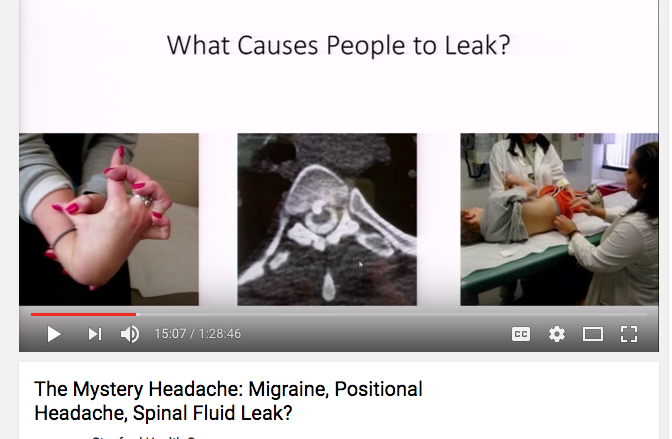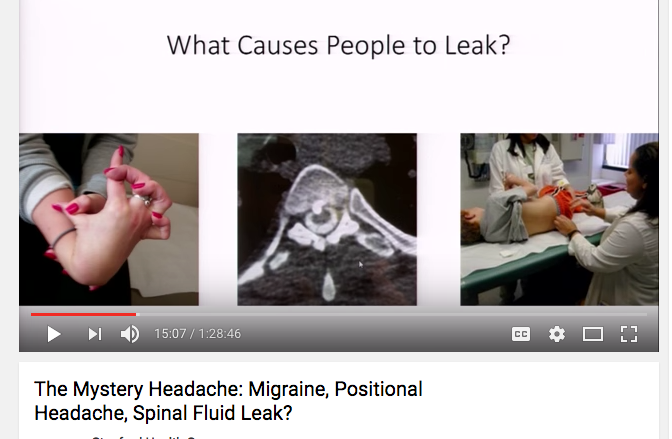It is well known that fluoroquinolone antibiotics (Cipro/ciprofloxacin, Levaquin/levofloxacin, Avelox/moxifloxacin, Floxin/ofloxacin, and a few others) damage connective tissues–including musculoskeletal connective tissues like tendons, cartilage, bone, and muscle, as well as other connective tissues such as ocular tissue (including the retina), eardrums, and cardiac/heart tissue. Multiple studies have found that fluoroquinolones are toxic and damaging to connective tissues. Given the wide differences in tissues that fluoroquinolones have been shown to deleteriously affect–from cartilage to cardiac/heart tissue–it is reasonable to assert that they damage all connective tissues throughout the body. (Read any of the articles in the citations listed below for information about how fluoroquinolones damage connective tissues.)
Given that fluoroquinolones damage connective tissues (probably all connective tissues), I have a new, developing, hypothesis for how fluoroquinolones lead to fluoroquinolone toxicity syndrome/fluoroquinolone associated disability (FQAD). Please keep in mind that this is one of many hypotheses, and it is just one among about a dozen possibilities (you can read about some of the other possibilities on the post What is Fluoroquinolone Toxicity, or through the free ebook Hacking Fluoroquinolones.)
Hypothesis:
Fluoroquinolones damage the dura (dura mater)–the layer of connective tissue that surrounds the brain and spinal cord and keeps spinal fluid around those vital organs. This leads to spinal fluid leakage, which leads to many symptoms of fluoroquinolone toxicity, including:
- Headaches (Including chronic migraines)
- Autonomic nervous system dysfunction including POTS (postural orthostatic tachycardia syndrome) symptoms
- Nausea and/or vomiting
- Ringing in the ears (tinnitus) and hearing changes
- Neck pain and stiffness
- Radicular pain
- Memory and cognitive problems (and other “neurolgic weirdness”)
- Fatigue
- Tachycardia (Racing heart/heart palpitations)
- Dizziness (especially upon standing)
This wonderful lecture by Dr. Ian Carroll describes how cerebrospinal fluid leaks can lead to symptoms of many illnesses, including “mysterious” diseases like POTS, ME/CFS, fibromyalgia, as well as heart palpitations and severe headaches.
I suggest that you watch the entire video, as well as Dr. Carroll’s other videos on youtube. Here are some notes/highlights from the video above:
- Many symptoms of POTS are actually cerebrospinal fluid leaks
- The spinal cord is surrounded by tissue called the dura, and the dura holds cerebrospinal fluid around the spinal cord and brain. It’s like a water-tight bag that holds in cerebrospinal fluid and maintains pressure.
- What causes people to have cerebrospinal fluid leaks?
- Messed up connective tissue
- From connective tissue disorders like ehlers danlos syndrome
- (From fluoroquinolones???)
- Something calcified and boney sticking into the dura
- Bulging discs
- Iatrogenic damage
- Lumbar punctures
- Epidurals
- Back surgery
- Car accidents (and other types of jarring, high-speed accidents)
- Whiplash
- Messed up connective tissue
- How do you know if you have messed up connective tissue?
- Hyper-flexibility
- Being taller than average more often have connective tissue problems
- Aortic aneurysm and aortic dissection (this is directly related to fluoroquinolones)
- Calcium spikes sticking into the dura are difficult to detect via MRI, but they are clearer with a ct myelogram.
- “Neurologic weirdness” is a sign of cerebrospinal fluid leaks. If someone is more confused later in the day, that can be an example of neurologic weirdness that results from a leak.
- Cerebrospinal fluid leaks are misunderstood and under-recognized.
- Post-puncture cerebrospinal fluid leaks are recognized.
- Longer term cerebrospinal fluid leaks are less recognized and they present differently.
- Post Dural Puncture Headache (PDPH) vs. Spontaneous Leak
- Post Dural Puncture Headache (PDPH)
- Single leak, orthostatic headache, 90% response to single EBP, Natural history understood and mostly benign, rarely mysterious, young women most at risk, fixable.
- Spontaneous Leak
- 30-40% multisite leak, late day headache, exertional headache, non-orthostatic CDH, 30% response to single EBP, natural history poorly understood and marked by chronic disability, often mysterious, HDCT, fixable.
- Post Dural Puncture Headache (PDPH)
- There are people out there who have cerebrospinal fluid leaks that aren’t being recognized. Many people with cerebrospinal fluid leaks are misdiagnosed. Cerebrospinal fluid leaks are fixable and it is a shame that they aren’t all being recognized.
- Cerebrospinal fluid leaks are NOT RARE.
- Symptoms of cerebrospinal fluid leaks:
- Headache, nausea and/or vomiting, ringing in the ears and hearing changes, neck pain and stiffness, radicular pain, neurological weirdness, fatigue
- The effects of cerebrospinal fluid leaks on the pituitary gland
- The pituitary gland is enlarged (How does this affect hormones???)
- The connection between the pituitary gland and the brain can be disturbed, and this can lead to hormonal disruptions. High prolactin is an indicator of this problem.
- Cerebrospinal fluid leaks can cause sagging of other parts of the brain.
- MRIs of people suffering from cerebrospinal fluid leaks often appear normal. They are subtle and most doctors aren’t trained to see them.
- Treatment of cerebrospinal fluid leaks
- Epidural blood patches (Dr. Carroll describes how they’re done)
- Cerebrospinal fluid leaks are NOT RARE, they’re just misdiagnosed and under-recognized
Before I watched Dr. Carroll’s lecture, I knew that cerebrospinal fluid leaks were painful and debilitating, but I didn’t realize that they were connected to “mysterious” disease symptoms or autonomic nervous system damage.
Connecting cerebrospinal fluid leaks to fatigue, a racing heart, blood pressure and blood sugar irregularities, tinnitus, cognitive and memory problems, hormonal abnormalities, etc. establishes a plausible connection between the (well-established) connective tissue damage done by fluoroquinolones, and the array of chronic, mysterious, disease symptoms that people with fluoroquinolone toxicity suffer from. Perhaps fluoroquinolones cause an array of debilitating chronic, mysterious illness symptoms through damaging the dura and allowing cerebrospinal fluid to leak–which leads to multiple symptoms of fluoroquinolone toxicity (and other chronic illnesses). It certainly seems like a plausible hypothesis to me. It actually seems like an easier hypothesis to postulate and prove than many of the other hypotheses regarding fluoroquinolone toxicity that have been put forth. As I noted above, the damage that fluoroquinolones do to connective tissues is well-established and recognized, and if someone looked at the effects of fluoroquinolones on dura mater tissue specifically, this hypothesis would be easily testable.
Some additional evidence supporting the possible connection between fluoroquinolones and cerebrospinal fluid leaks comes from the large number of people in cerebrospinal fluid leak support groups that have taken fluoroquinolones in the past who assert that fluoroquinolones contributed to their cerebrospinal fluid leak. I know that asking people in facebook support groups doesn’t count as a scientific study, but (to the best of my knowledge) no scientific studies of the link between fluoroquinolone use and cerebrospinal fluid leaks has been done, and the testimonials of the people who have cerebrospinal fluid leaks are important–they point both researchers and fellow patients toward research that may provide answers.
I also find it to be interesting that cerebrospinal fluid leaks affect the pituitary gland, which affects hormone production and regulation. Many people with fluoroquinolone toxicity syndrome have hormonal problems–from tanked testosterone to thyroid abnormalities. Maybe fluoroquinolones cause damaged dura tissue, which causes cerebrospinal fluid leaks, which causes pituitary gland structural abnormalities, which causes hormonal dysregulation, which causes multi-symptom chronic illness symptoms.
Dr. Carroll’s hypotheses and observations are fascinating and exciting for those who are dealing with fluoroquinolone toxicity and other multi-symptom, chronic, mysterious illnesses. I hope that they are explored further. Dr. Carroll’s results with patients are incredibly promising, exciting, and hopeful for people who are suffering from multi-symptom, chronic, mysterious illnesses–including those suffering from fluoroquinolone toxicity. I hope that Dr. Carroll, or other clinicians or researchers, look into the connections between fluoroquinolones and chronic cerebrospinal fluid leaks. It’s possible that the connections could lead to a comprehensive theory of fluoroquinolone toxicity, and may also lead to breakthroughs in other chronic illnesses.
Citations:













… [Trackback]
[…] Read More here to that Topic: floxiehope.com/do-fluoroquinolones-cause-cerebrospinal-fluid-leaks/ […]
… [Trackback]
[…] Read More Information here on that Topic: floxiehope.com/do-fluoroquinolones-cause-cerebrospinal-fluid-leaks/ […]
… [Trackback]
[…] Find More here to that Topic: floxiehope.com/do-fluoroquinolones-cause-cerebrospinal-fluid-leaks/ […]
… [Trackback]
[…] Information on that Topic: floxiehope.com/do-fluoroquinolones-cause-cerebrospinal-fluid-leaks/ […]
… [Trackback]
[…] Find More on that Topic: floxiehope.com/do-fluoroquinolones-cause-cerebrospinal-fluid-leaks/ […]
… [Trackback]
[…] Find More Info here to that Topic: floxiehope.com/do-fluoroquinolones-cause-cerebrospinal-fluid-leaks/ […]
… [Trackback]
[…] Read More Information here to that Topic: floxiehope.com/do-fluoroquinolones-cause-cerebrospinal-fluid-leaks/ […]
… [Trackback]
[…] Find More Information here to that Topic: floxiehope.com/do-fluoroquinolones-cause-cerebrospinal-fluid-leaks/ […]
… [Trackback]
[…] Find More on that Topic: floxiehope.com/do-fluoroquinolones-cause-cerebrospinal-fluid-leaks/ […]
… [Trackback]
[…] There you will find 20972 additional Information on that Topic: floxiehope.com/do-fluoroquinolones-cause-cerebrospinal-fluid-leaks/ […]
… [Trackback]
[…] There you can find 31502 more Info to that Topic: floxiehope.com/do-fluoroquinolones-cause-cerebrospinal-fluid-leaks/ […]
… [Trackback]
[…] Find More on to that Topic: floxiehope.com/do-fluoroquinolones-cause-cerebrospinal-fluid-leaks/ […]
… [Trackback]
[…] Find More to that Topic: floxiehope.com/do-fluoroquinolones-cause-cerebrospinal-fluid-leaks/ […]
… [Trackback]
[…] Information to that Topic: floxiehope.com/do-fluoroquinolones-cause-cerebrospinal-fluid-leaks/ […]
… [Trackback]
[…] Information to that Topic: floxiehope.com/do-fluoroquinolones-cause-cerebrospinal-fluid-leaks/ […]
… [Trackback]
[…] Read More on that Topic: floxiehope.com/do-fluoroquinolones-cause-cerebrospinal-fluid-leaks/ […]
… [Trackback]
[…] Find More on that Topic: floxiehope.com/do-fluoroquinolones-cause-cerebrospinal-fluid-leaks/ […]
… [Trackback]
[…] Read More Information here on that Topic: floxiehope.com/do-fluoroquinolones-cause-cerebrospinal-fluid-leaks/ […]